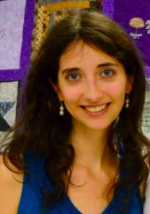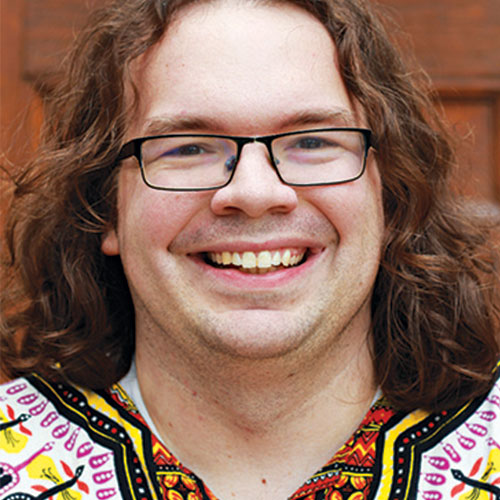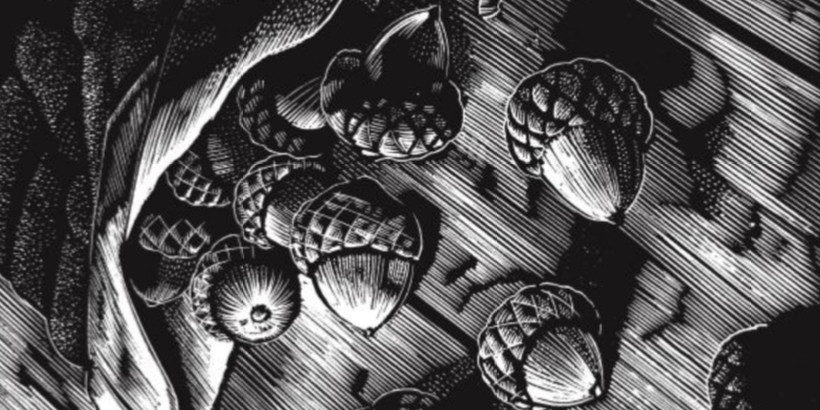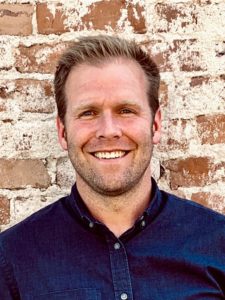Caldwell, ID. At the last Front Porch Republic Conference in Louisville on September 14, 2019, Wendell Berry said: “You want to do something subversive these days? Be happy! There are plenty of reasons if you look around.” Berry’s life’s work proves that the happiness for which he advocates is not a fatuous, ignorant, quietist complacency, but rather a deeply rooted happiness grounded in gratitude, joy, and good work. I imagine something along the lines of C.R. Wiley’s “Bombadil Option.”
Wise assessments of the present evils of the world cannot help but foster at least momentary bouts of despair. Fear is not completely unreasonable. But Berry’s challenge might also remind us that, as Marilynne Robinson once said, “Fear is not a Christian habit of mind,” and that hope is a virtue. While Christian hope is virtuous insofar as it rests on the expectation of redemption that only God can fulfill, cultivating that virtue should also yield insight into the more mundane redemptions that are in fact possible. This does not have to be the paradoxical belief that it might seem. To return to Berry: “we can live fully only by making ourselves as answerable to the claims of eternity as to those of time.”
For this first Brass Spittoon of 2020, respondents have been asked to take up Berry’s challenge and consider what recent trends—considered at the local, regional, and global scales—give reason for hope in 2020.
Wilfred M. McClay teaches history and humanities at the University of Oklahoma and his most recent book is Land of Hope: An Invitation to the Great American Story. Bethany Hebbard is the Community Corps Director at Mobile Loaves and Fishes in Austin, Texas, and formerly Assistant Professor of English at the University of Mobile. Jake Meador is editor-in-chief of Mere Orthodoxy and Vice President of the Davenant Institute, and the author of In Search of the Common Good: Christian Fidelity in a Fractured World.
Wilfred M. McClay

The late John Lukacs used to insist that historians are not prophets, and he was surely onto something. Perhaps the two are mutually exclusive for limited creatures like us. Janus was a god, after all. But we should look a little more closely at this declaration. As his devoted readers know, Lukacs built much of his career around the prophetic assertion that the Modern Age was coming to an end, and he offered all sorts of predictions about the implications of that tectonic shift. How to square those two assertions?
In John’s case, he did it by sheer force of personality. Which is to say that he contradicted himself with blithe indifference. And there’s nothing wrong with that. He was large and contained multitudes. As do we all. We can’t help but speculate about the future, despite its contingency, and Berry’s “looking around” means seeing potentialities far more than actualities. It is in large part an activity of the imagination. It is William Blake’s seeing through, not with, the eye.
So what do I see that gives me hope? I suppose I could put it in a single phrase: the persistence of certain local human virtues, and the persistence of our yearning for them, our awareness of our need for them, over against the hypermediated and thoroughly artificial forms of connectedness that occupy so much of our national life and consciousness. Such false connections preoccupy and distract us, but still somehow leave us restless and malnourished. In blue moods I often worry about the extent to which so many young people (and, to be sure, not only young people) become so immersed in the gnostic abstractions of mediated experience that they have lost the ability to look around in the real world, or to understand that genuinely “looking around” is something radically different from, say, surfing the web. I even start thinking of Plato’s Allegory of the Cave, in which the prisoners are transfixed by images projected onto the walls, and wonder whether this famous theatre of illusion is a metaphor for our own, with Plato’s flickering images having become replaced by pixilated screens.
But then something comes along to knock me out of that dark mood—sometimes my own students at the University of Oklahoma, for example, some of whom are miraculously immune to these tendencies, and who feel acutely what is missing from them. One can also draw hope from the stubborn incapacity of so many ordinary people to buy it all, to submit to a nationalized and centralized regime of thought management, and to let that regime colonize their thoughts and control their actions. To be sure, there is an element of ignorance or ornery ineducability undergirding in this attitude, at times. But that bothers me less and less, as what we call education ceases to be formative or “liberal,” in the old sense of the term, and becomes more and more openly propagandistic. Orneriness can be a handy virtue for a self-governing people. Education is not always an unalloyed good, certainly not if its principal effect is to produce cultural homogenization at the expense of thick and settled family and community life.
So there is hope. Despite the fact that what our mass popular culture and mass news media serve up to us is, for the most part, an anti-culture of illusion, ordinary people’s minds are far less captured by this dreck and preening and badgering than we sometimes fear. Left to their own devices, a great many ordinary people show a steady sense of human decency. This is something at which I marvel every day. But it is fragile. It badly needs to be reinforced.
I see a real possibility that as more and more Americans scale back their attention and withdraw affect from the abstractions and illusions of the national and global theatre—from the “narratives” of large-scale television news, for example, or the even more worthless “local” news—and instead take time to “look around,” there will be a growing recovery of the vitality of local existence as the hub of our lifeworld.
I’m not saying that we should withdraw all attention and affect from the national and global stages. That would be both impossible and undesirable. But an attenuation of attention directed to the illusory Now would be an immensely good thing. And I think there is reason to hope for that.
Bethany Hebbard

To be hopeful in the face of a frightening world requires companionship. From my vantage in central Texas, I’m most heartened by efforts to renew diverse forms of connection with our neighbors.
Community First! Village: For more than four years, an extraordinary experiment in connection has been growing in my own backyard. It’s been my honor to work and (until a few months ago) live at Community First! Village, a master-planned community for the chronically homeless in Austin, Texas. While there is plenty to celebrate in this development—low-cost, creative housing, micro-enterprise opportunities, and access to other resources—the most significant virtue of the Village is that it bears witness to our need for one another.
Community First! builds its work on the premise that the root cause of homelessness is the catastrophic breakdown of family and community. Its metric for success, therefore, is not primarily number of people housed. Instead, the Village exists to bring business executives, stay-at-home moms, grandparents, and hipsters into relationships with men and women who have experienced homelessness. This kind of empowerment is much messier than merely providing housing, but in a world of increasing displacement, Community First! recognizes that human-to-human, heart-to-heart connects must ground any attempts to alleviate material poverty.
Barton Springs Mill: Once upon a time, I would find relief from my PhD coursework by sitting on the banks of the Brazos reading Mother Earth News. I would fantasize a life in which I could retreat to a small cabin, bake bread, and ignore academic job boards. I assumed that this retreat would have to include a home grain mill and a small wheat field, which I would tend when I wasn’t weaving my own cloth, brewing my own ink, and writing a novel. However, like so many who entertain such dreams, the work of a real garden soon taught me there was neither no way nor reason to make every item in my home without the help of others. I felt stuck, however, between growing my own wheat and buying whatever was available on the grocery shelves.
Years later, I am rejoicing to have discovered Barton Springs Mill. Located on the west side of Austin, Barton Springs stone mills heirloom grains for baking and brewing. Miller James Brown preserves and distributes seedstock directly to his network of Texas farmers. You can taste the goodness of those relationships in the sweet profile of Rouge de Bordeaux wheat, or the hearty flavors of Turkey Red or einkorn varieties. By joining with a few other families, my husband and I can purchase a 50-lb bag of flour and pay less per pound than we would for conventional flour.
Barton Springs Mill enlarges my hope by renewing my sense of right interdependence. Now, every loaf of bread I bake in 2020 will remind me that I am gladly, connected with farmers across Texas, with families who purchase flour with me, and with a business that adds resources and jobs to my local community. My “self-sufficient” dreams by the river were too small. I didn’t really want a grain mill—I wanted a miller!
Fibershed: As a farmer’s wife, I’m equipped with many resources for setting a good table. I know which farmers at the market use regenerative practices; I know how to make a simple meal stretch to feed unexpected guests; books and friends have given me rich theological vocabulary for blessing the meal. It’s been encouraging, therefore, to watch a new movement bring some of these same considerations to clothes we wear each day.
The “Fibershed” movement—founded by Rebecca Burgess—empowers farmers, ranchers, scientists, designers, manufacturers, and consumers to find alternatives to the destructive complexities of the global clothing industry. These alternatives can be as ambitious as re-opening long shuttered textile mills in California, or as homely as mending workshops. All of Fibershed’s work depends on connection: her first efforts paired California fiber ranchers with knitters and weavers to produce “local cloth.”
Burgess highlights the need for renewed collaboration in all of Fibershed’s work. More recently, their efforts connected North Face with fibers producers within 150 miles of their corporate office, leading to the launch of the “Backyard Hoodie.” Rather than basing its appeal on a call for “ethical fashion,”—a call all too easily dismissed by people who don’t care about fashion per se—Fibershed reminds us that in our most intimate, daily acts of feeding and clothing ourselves, we choose what kind of relationships we want with our place and with our neighbors.
Jake Meador

Local: There is no shortage of stories about the failures of churches in America today. So one of the great pleasures I’ve had over the past few months is seeing local churches that are healthy and actually behaving like a community of Christian believers. My family had a very challenging end of 2019 for a variety of reasons and over the course of those several months we received a number of meals from church friends, our pastor’s wife weeded our entire backyard, an engineer from the church came to the house on three separate occasions to help me troubleshoot some HVAC issues, another family that helps with a local food distribution ministry had leftover food at the end of the day that they dropped off for us, and a young woman from the church babysat for us so my wife and I could go on a badly needed date. To be served in those ways—and to know that it’s OK to ask for help when you need it and that you have people who will be there to offer what they can—is the kind of experience that helps you feel at home in a place.
I’ve heard of several similar stories from friends and family of small, anonymous local churches that are serving their neighbors in tangible, life-giving ways. We almost never hear about these things because they aren’t ‘newsworthy,’ and, often, the people offering aid would rather not be known. But it is a good thing to seek these stories out as we can and to be grateful for them, if for no other reason than that gratitude is central to the good life and the relationship between gratitude and hope seems, to me, to be a close one.
Regional: There are a number of encouraging things happening with the local food scene in southeast Nebraska. As recently as ten years ago, we had one large organic grocer in Lincoln, the state capital, and a few CSAs to choose from. The craft brewing scene was mediocre at best and locally owned restaurants and bakeries were limited. Thankfully, much has changed since then. We now have an excellent butcher shop, a couple farm-to-table type restaurants, several great locally owned bakeries, several organic grocers, a number of genuinely excellent craft breweries, and a number of local farms that sell to local grocers and at the Farmer’s Market. There is still work to be done. As in most other places, good food is still priced in such a way that it is a luxury item and out of reach for many people. That being said, something important has already happened: local food has started to become normal again, being attentive to ingredients and cooking technique is becoming normal again, and as this becomes more established, the quality of what is produced is able to speak for itself. I do not know Omaha as well as I do Lincoln, but from 50 miles away along I-80 it certainly looks as if Omaha has enjoyed a similar boom.
There is still a great deal that needs to change around the Midwest’s food and agriculture. The floods of 2019 were devastating in Nebraska and many farmers are still on the brink of bankruptcy. But we are seeing some early signs that suggest we may be moving toward healthier relationships with the land and with our food and that is something to be thankful for anywhere but especially in a state as dependent on agriculture as Nebraska.
Global: It is a strange thing to cheer disruption while being a conservative. Our biases run toward stability and caution, even hesitation. To cheer those who would storm the Bastille does not come naturally to us. But, of course, conservatism is not merely an ethos of caution, a desire to conserve whatever it is that currently exists. It must also possess a positively stated account of the good—an ability to define what the good life is, what the good community is. For too long, the post-war consensus has avoided attempts to identify those goods. It has, rather, tended toward negation, to the preservation of negative forms of freedom at the expense of more positive (and socially realized) forms of freedom. Because of this, our communities have been impoverished and lacked a clear sense of purpose or identity. Due to this lack of self-understanding, these communities have become brittle and vulnerable. They, and the land that sustains them, have far too often been left to be picked at by capitalist vultures.
Prior to 2015, I did not expect that order to be challenged in any meaningful way. I thought it was too entrenched. The events of the past five years have shown that that is not the case. There is danger in this, of course: the post-war consensus emerged for a reason, just as did classical liberalism. Decades of religious war (in liberalism’s case) and apocalyptic world wars (in the post-war consensus’s case) have a way of chastening our political ambitions, attuning us to the value of negative liberty and the dangers inherent in trying to advance positive forms of freedom on the political level.
It is for this reason that I also worry over the disruption of the past five years—if we simply recover what Rusty Reno calls ‘the strong gods’ of the pre-war era, then we may well end up with a system even more inhumane than that of the post-war consensus. And given the rise of the alt-right in America and of various genuinely far-right parties in Europe, that is not an idle fear, but a very real danger that genuine conservatives must attack at every turn.
Yet I am reminded of a poem Sheldon Vanauken wrote on the eve of his conversion: He says, in the poem, that a gap opened up before him—the leap to faith, to affirmation of the creeds, to belief in Christ crucified. He feared the jump. But then he realized a gap had also opened up behind him and he knew that he could not simply return to his previously ignorant unbelief. Whatever he did in that moment, it would be a movement toward something he had not yet known.
I suspect that we are in a similar moment now in our politics in much of the world, or at least in the western world—though the Middle East, eastern Asia, and sub-Saharan Africa all have their own political questions to answer. The leap toward whatever comes after the post-war consensus is frightening for many legitimate reasons. And yet we cannot go back to an order that has destroyed our land, condemned many to loneliness, anxiety, and depression, and has eaten away at the various ties that bind communities together. The gap exists both behind and in front of us. And that is frightening.
But if you are the sort of person who loves the land, who loves small community, and who desires to see civil society woven back together again, then a mass abandonment of the social order that has done such damage to the land, community, and civil society is something to rejoice in, even if we do not yet know what will come next. It is entirely possible that what comes next will be worse. But be that as it may, we cannot continue in what has come before. The gap lies both before and behind us. And the chance to participate in a conversation about what western social order ought to be in the years to come is something any engaged conservative should seize with relish.





1 comment
Dan Grubbs
Interdependence is something that is critical for a healthy community to have cohesiveness. I love hearing of stories of neighborliness and unselfish efforts on behalf of another community member. We need, individually, to decide to live this way no matter where we find ourselves.
Jake, Kansas City is experiencing a significant shift in how we think about food. As you know, it’s hard to do this in the heart of industrial ag territory. But, it’s happening because the consumer is beginning to wake up. I’m not sure it’s the “mass abandonment of the [current] social order” but it’s a start. I’m not saying we’re on the cusp of that point of abandonment that you wrote about, and for which I advocate. But, I don’t believe it will happen because of some non-profit being vocal or by some legislature or administration. I believe it will happen one family at a time who finally breaks loose from the pulls and claws of what we’ve all be inculcated to pursue. And for those of us who have broken away, we must form community among ourselves regardless of our creed. We must demonstrate the kind of interdependence on each other’s neighborliness that can show the rest of those around us a happy and peaceful post-tragedy Jobian life.
Comments are closed.